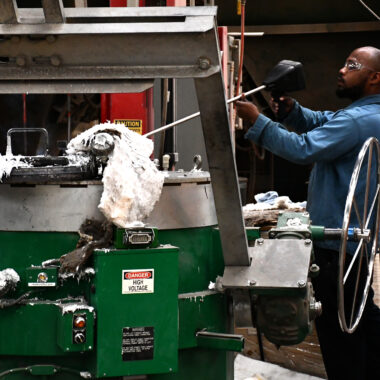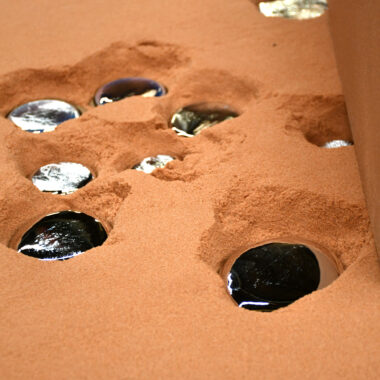Advancement Let Loose: Innovations About Aluminum Casting
Advancement Let Loose: Innovations About Aluminum Casting
Blog Article
Crafting Excellence: How to Attain High-Quality Aluminum Castings Every Time
In the world of light weight aluminum casting, the search of perfection is a constant journey that requires a careful strategy and an eager understanding of the ins and outs involved. Accomplishing regular top quality light weight aluminum spreadings requires a thorough understanding of the procedures, from picking the suitable alloy to carrying out accurate mold and mildew styles and diligently controlling casting specifications.
Recognizing Aluminum Casting Procedures
Light weight aluminum casting procedures, important in the production market, include the intricate improvement of molten aluminum into strong forms with a collection of carefully controlled actions. Recognizing these processes is critical to achieving top quality light weight aluminum castings consistently - about aluminum casting. The main techniques used in light weight aluminum casting are die spreading, sand casting, and investment casting

Each of these procedures has its benefits and is picked based upon aspects like complexity, volume, and wanted surface of the light weight aluminum spreading. about aluminum casting. Recognizing the intricacies of these techniques is critical for manufacturers aiming to create high-quality aluminum castings consistently
Picking the Right Aluminum Alloy
Choosing the suitable light weight aluminum alloy is a crucial choice in the manufacturing of premium aluminum spreadings. When selecting an aluminum alloy for spreading, it is necessary to consider the certain requirements of the application to make sure optimum efficiency.
One of one of the most generally utilized light weight aluminum alloys for spreading is A356. This alloy provides excellent castability, high toughness, and great rust resistance, making it appropriate for a wide variety of applications. 6061 aluminum alloy is preferred for its premium weldability and great mechanical buildings. For applications requiring high strength, 7075 light weight aluminum alloy is a prominent option due to its outstanding strength-to-weight ratio.
In enhancement to mechanical residential properties, considerations such as cost, schedule, and post-casting procedures need to likewise influence the option of the right light weight aluminum alloy. By thoroughly evaluating these variables, makers can make sure the manufacturing of high-grade aluminum spreadings that meet the wanted specs.
Executing Correct Mold Layout
Creating a reliable mold design is important for making sure the successful manufacturing of top notch aluminum castings. Correct mold layout plays a substantial duty in attaining the wanted characteristics of the last item. To execute an effective mold design, elements such as material flow, cooling down rates, and part geometry need to be very carefully considered.
One secret facet of mold and mildew style is ensuring correct dental filling and solidification of the aluminum within the mold dental caries. This involves developing runner and gating systems that help with smooth metal circulation and prevent flaws such as air entrapment or insufficient filling. In addition, including air conditioning channels right into the mold design assists regulate solidification prices and decrease the threat of porosity or shrinkage flaws.

Controlling Casting Parameters

Making Sure Post-Casting High Quality Checks
To preserve the high top quality of aluminum castings, comprehensive post-casting quality checks are important. After the spreading process is finished, it is vital to make certain that the end products meet the preferred standards and requirements. Among the main high quality checks involves checking the surface coating of the castings to determine any kind of flaws such as porosity, fractures, or surface area irregularities. This visual inspection is typically supplemented by non-destructive screening methods like ultrasonic screening or color penetrant inspection to discover internal defects that may jeopardize the honesty of the casting.
Dimensional precision is another crucial aspect that should be validated during post-casting high quality checks. Measurements of crucial measurements and tolerances ought to be required to click for more info confirm that the castings satisfy the required specifications. Additionally, mechanical buildings such as firmness, tensile toughness, and her comment is here impact resistance might require to be assessed with material screening to ensure that the spreadings have the essential stamina and resilience for their desired application.
Conclusion
To conclude, accomplishing high-grade light weight aluminum castings requires a comprehensive understanding of the spreading procedures, picking the ideal alloy, designing mold and mildews efficiently, regulating spreading criteria thoroughly, and carrying out post-casting high quality checks vigilantly. By adhering to these actions, suppliers can regularly generate light weight aluminum castings that fulfill the highest standards of quality and performance.
Achieving consistent high-grade aluminum spreadings requires a comprehensive grasp of the procedures, from selecting the suitable alloy to performing specific mold and mildew designs and carefully controlling casting specifications. The main techniques utilized in light weight aluminum spreading are pass away casting, sand casting, and financial investment casting.
Investment spreading, also known as accuracy casting, entails developing wax patterns that are covered in ceramic to form mold and mildews.Picking the suitable light weight aluminum alloy is a critical choice in the production of premium light weight aluminum spreadings.Ensuring exact control over casting parameters is vital for keeping consistency this contact form and high quality in aluminum casting production.
Report this page